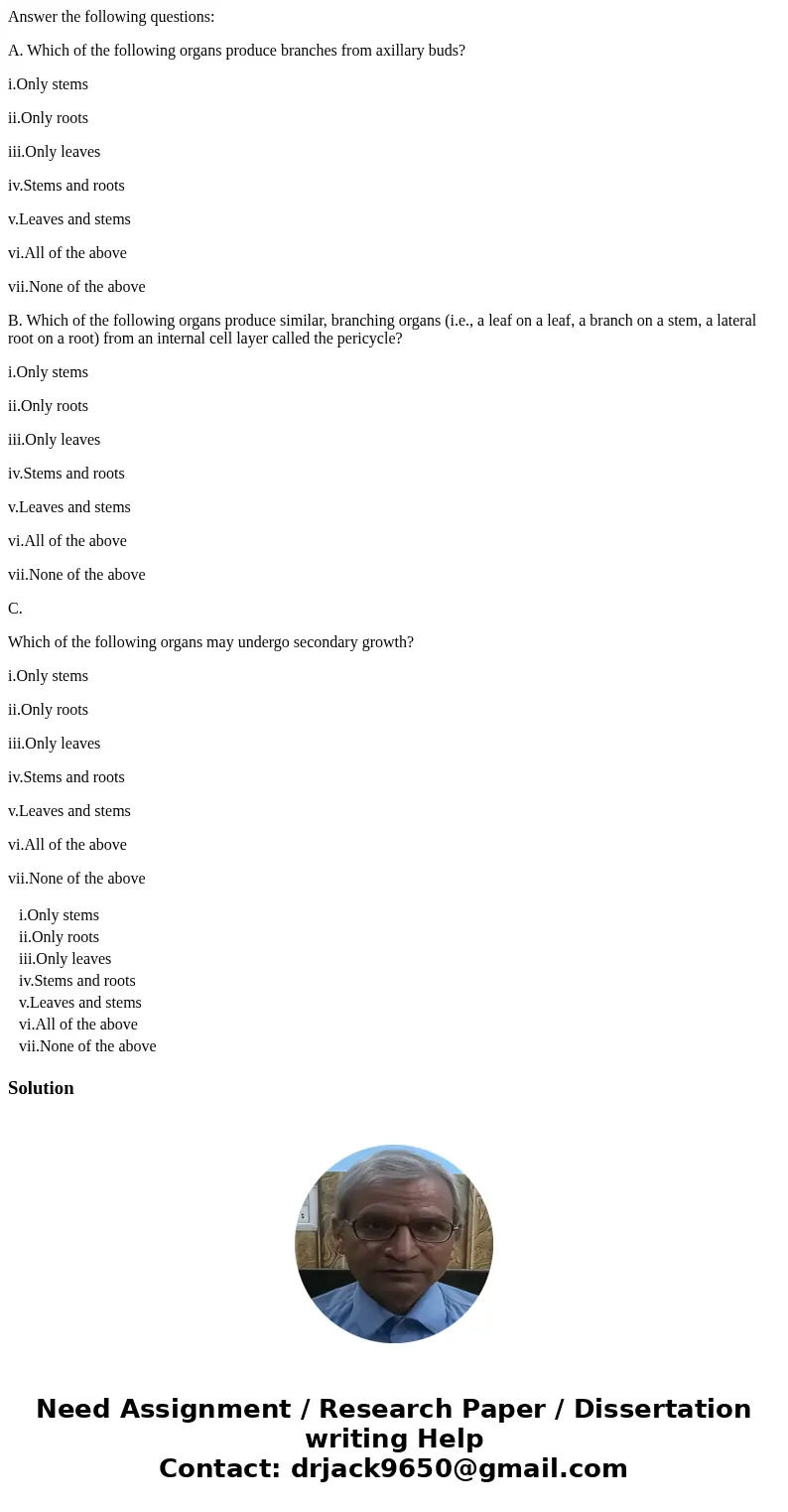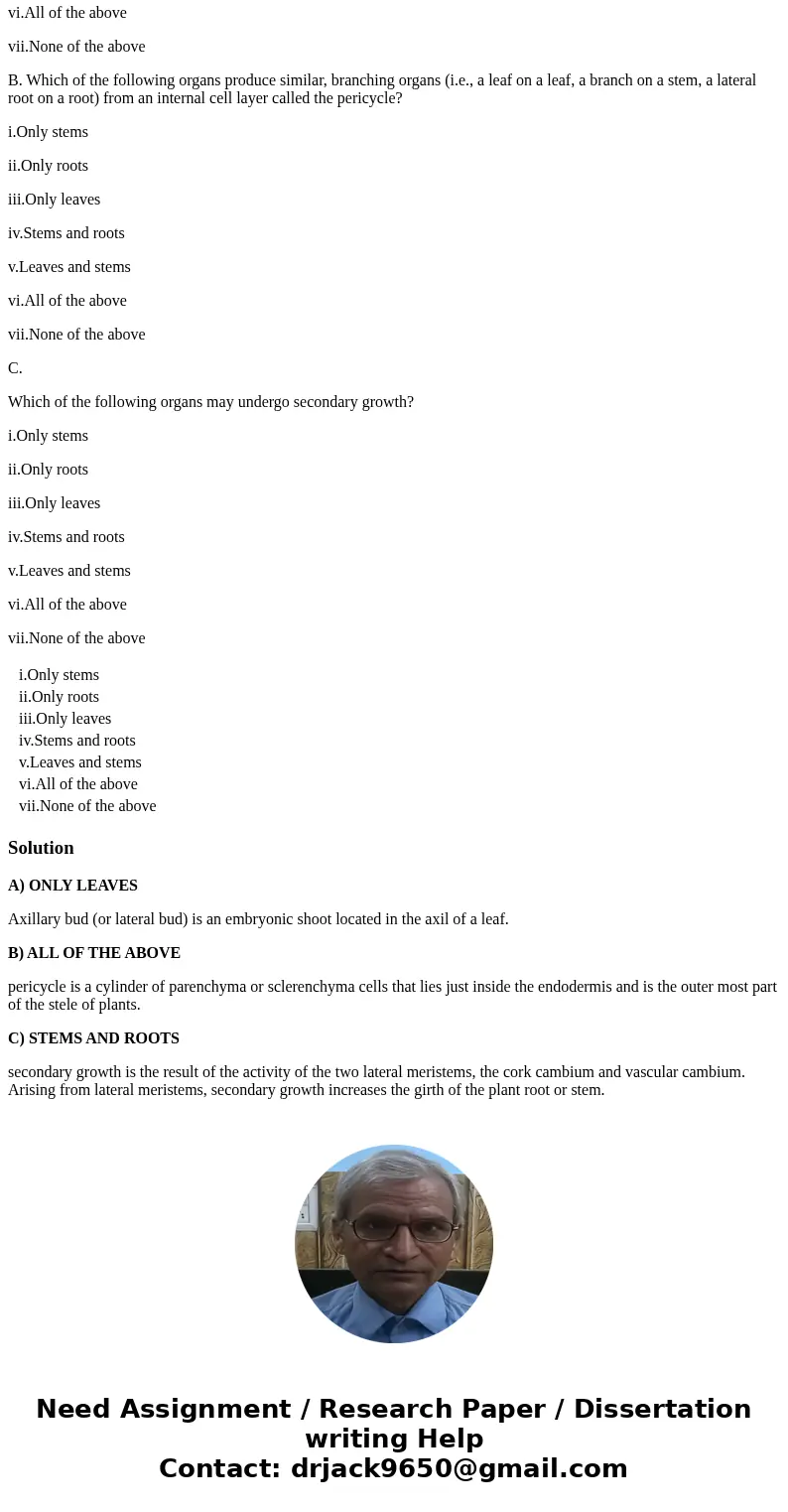Answer the following questions A Which of the following orga
Answer the following questions:
A. Which of the following organs produce branches from axillary buds?
i.Only stems
ii.Only roots
iii.Only leaves
iv.Stems and roots
v.Leaves and stems
vi.All of the above
vii.None of the above
B. Which of the following organs produce similar, branching organs (i.e., a leaf on a leaf, a branch on a stem, a lateral root on a root) from an internal cell layer called the pericycle?
i.Only stems
ii.Only roots
iii.Only leaves
iv.Stems and roots
v.Leaves and stems
vi.All of the above
vii.None of the above
C.
Which of the following organs may undergo secondary growth?
i.Only stems
ii.Only roots
iii.Only leaves
iv.Stems and roots
v.Leaves and stems
vi.All of the above
vii.None of the above
| i.Only stems | ||
| ii.Only roots | ||
| iii.Only leaves | ||
| iv.Stems and roots | ||
| v.Leaves and stems | ||
| vi.All of the above | ||
| vii.None of the above |
Solution
A) ONLY LEAVES
Axillary bud (or lateral bud) is an embryonic shoot located in the axil of a leaf.
B) ALL OF THE ABOVE
pericycle is a cylinder of parenchyma or sclerenchyma cells that lies just inside the endodermis and is the outer most part of the stele of plants.
C) STEMS AND ROOTS
secondary growth is the result of the activity of the two lateral meristems, the cork cambium and vascular cambium. Arising from lateral meristems, secondary growth increases the girth of the plant root or stem.


 Homework Sourse
Homework Sourse